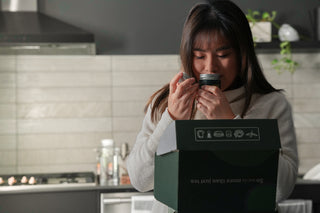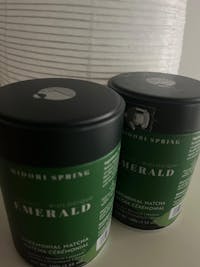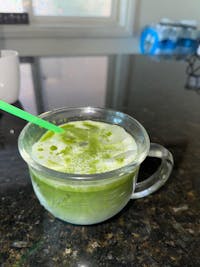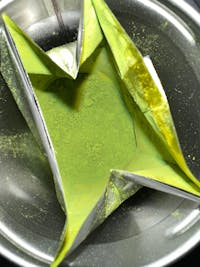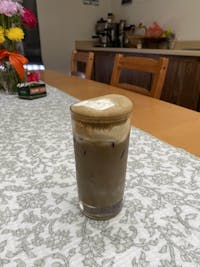Depending on how you make it, your cup of matcha can be savory and vegetal or sweet and floral. It also has everything you need in a drink: enough time-release caffeine to wake you up in the morning and healthy amino acids like L-Theanine to keep you going throughout your day. And did we mention it's delicious?
Matcha is made from the first flush shade-grown leaves of the Camellia sinensis plant. The steamed and dried leaves are ground on Mikage stone mills (ceremonial) or a mill machine (culinary). Matcha has significant levels of L-theanine and free amino acids. It has been popular since the 7th century.

Unlike regular teas or coffees, which depend on additives to mask bitterness, matcha's taste and texture can be changed just by switching your method of whisking.
That's right. You can easily make your matcha creamier and sweeter, or thinner and saltier, just by switching up what whisk you use. Here's how.
Make the Perfect Savory Umami-Filled Cup of Matcha

If you'd like to play up your matcha's more umami side and bring out the vegetal notes and savory aroma of high quality matcha, you'll want to go old-school. And by old-school, we mean using a bamboo whisk (Chasen).
Oh, we also mean less water. A thicker brew is always going to come out tasting more savory as the fine matcha powder is less diluted.
Pro-Tip: when brewing matcha, never let your water get over 175 degrees Fahrenheit/80 degrees Celsius. Too hot water means a more bitter brew.
The most important part of making matcha, besides the quality of the matcha itself, is the chasen. Its prongs are perfectly designed to incorporate your precious matcha powder into water. A minute or two spent whisking in a M or zigzag pattern is all you need to make delicious tea and create the prized foam top that's as much a part of the tea-drinking experience as the tea itself.
The microbubbles that form as you aerate the tea with the matcha whisk turn into a thick, uniform foam that stays consistent as you drink. This foam is also noticeably velvety and umami in taste. Matcha tea whisked the traditional way also comes out a little thicker, with a silkier mouthfeel.
How to Make the Perfect Sweet Cup of Matcha

Like making a savory cup, making a cup of matcha sweeter without sugar depends on your tools. Using a milk frother will mute the savory aspect and really play up the floral notes in the brew that you might not otherwise notice.
By itself, matcha has a vegetal flavor profile which turns bitter when exposed to too high a heat. Heat changes the amino acid L-theanine into Catechin, which tastes bitter. One theory for why you get a sweeter cup is that a frother cools the hot water fast enough to prevent that from happening.
And since a milk frother oscillates at a much higher rate than a human hand can, your tea is ready faster and is more uniformly oxygenated. To really help keep your tea mild, use a little more water than usual.
Pro-Tip: Cold-brewing your matcha makes it automatically sweeter and milder.
It's worth noting that it'll be much harder to make the thick tea, or koicha, without splattering half of it out of your chawan, but if you're not performing a tea ceremony, you can skip that step and use enough water to immerse the frother. (A less powerful model will make less mess, but you might have to use it more than once to get a good foam.)
After running tests with two kinds of milk frothers, we found that the weaker one created a thinner foam with more uneven bubbles that disappeared quickly, while the stronger one made a very uniform foam of microbubbles. Both foams tasted much sweeter, with very little umami flavor, and both foams were thinner than the one made using traditional methods.
If you're looking for a bit of difference in your daily cup of matcha without adding unnecessary calories and additives, changing your whisking game will give you what you're looking for.







